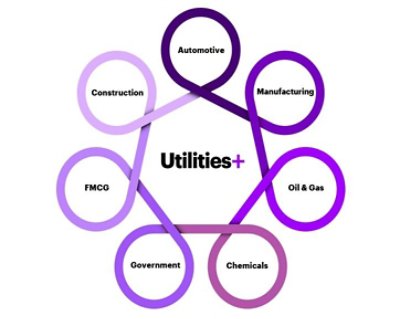Blog
Will they still be “Utilities” by 2030?
3-MINUTE READ
June 24, 2021
Blog
3-MINUTE READ
June 24, 2021
From the way we commute and work to the structure of investment funds, the energy transition is changing everything. It is a shift like no other, offering real rewards to organizations aiming to make a net-zero world possible.
The lure of new possibilities has attracted players from almost every sector and changed the makeup of the energy market. As the boundaries between industries blur, utilities are being challenged to build on the progress they have already made and continue leading the way to net zero.
But what exactly will they become? As they set their course through unchartered territory, it’s a question that must be answered today to take charge of tomorrow.
For (arguably) the first time, consumers, employees, investors, and legislators have agreed that they need sustainable, safe, reliable low-emission solutions.
It’s a consensus years in the making. Having seen the potential of renewables, progressive policy makers and organizations have helped to make clean power mainstream.
The businesses that acted early have been rewarded, and many now have a market cap that rivals the oil majors.
With clean electricity taking a central role in the new energy model – one that oil has played for many years – now is the time for the industry transition to reach another level.
So, what’s next?
The next phase of the ongoing evolution of the industry will emphasis downstream solutions and Utility-scale renewables through the deployment and integration of new, low-emission technologies that enable the end consumer to play an even more active role.
This amplifies the change that has fallen at the feet of utilities.
In what feels like no time at all, the ask has gone from maintaining, monitoring, and modernizing the network to preparing an entirely new, data-driven system that’s ready for a surge in batteries, decentralized generation and electric vehicles.
The deadline to make these changes? A few asset lifecycles.
By reinventing themselves around sustainability and continued digitization, forging new alliances to acquire new capabilities at speed and scale, and working across emerging and established industries, utilities can take the reins and drive change.
To meet those demands, investments in new technologies and capabilities will need to be increased, quickly.
Funding such a fundamental shift while minimizing the impact on consumers, and maintaining industrial competitiveness, will call for widespread digitization: not only to enable the shift to a data-driven energy system and reduce costs, but also to attract investment.
With investors increasingly assessing opportunities based on the financial, environmental, and societal risk, utilities will need to match their accelerating digitization with a focus on sustainability and ESG compliance: a code that the so-called “Green Energy Majors” have already cracked.
For many, widespread electrification seems to be a core part of the answer to the questions posed by the energy transition.
Within an adequate energy mix, electrification can drive decarbonization, create new jobs, and yield significant returns. – and we expect E to replace I as the mark of progressive products as we race towards 2030, a significant year in many net zero timeframes.
Although the era of electricity can help to overcome many of the obstacles on the way to a low-emissions world, it does put the utility industry under even more pressure.
With deadlines looming, government and business leaders alike have already turned to utility providers for the digital offerings they need.
Are today’s utilities equipped to answer the call?
Utilities’ unique expertise and assets mean that they can take a leading role in the energy transition – and many already are.
By reinventing themselves around sustainability and continued digitization, forging new alliances to acquire new capabilities at speed and scale, and working across emerging and established industries, utilities can take the reins and drive change rather than reacting to it.
But this is not another round of reinvention. We expect today’s utilities to become tomorrow’s energy service providers: the collaborative, connective link that makes entirely new industries possible by supplying the platforms and products that help every industry get to net zero.


A graphic showing the new position of utilities at the center of emerging industries
Will they still be “Utilities” as we know them by 2030? No – they will become infinitely more.